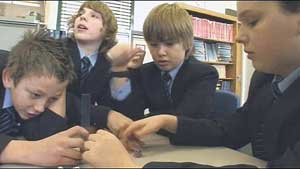Introduction
In most mathematics and science classrooms, students are provided with structured tasks and are told precisely which techniques to deploy. Students learn by following instructions. Problems and situations that arise in the world are not usually like this. Rather than being exercises in the use of a particular skill or concept, real-world problems require students to make simplifications, model situations, choose appropriate knowledge and processes from their 'toolkit', and test whether their solution is "good enough" for the purpose in hand.
It seems logical that if students are to learn to use their skills autonomously in their future lives, they will need some opportunities to work on less structured problems in their classrooms. This unit compares structured and unstructured versions of problems and considers the demands and challenges unstructured problems present to students and teachers.
About this Module
This module has been compiled for PRIMAS from professional development materials developed by the Shell Centre team at the Centre for Research in Mathematics Education, University of Nottingham. These materials were originally written for two projects:
- Bowland Maths is a project aimed at developing the key processes involved in mathematical problem solving, using a range of realistic and fantasy scenarios. This was funded by the Bowland Charitable Trust.
- Improving Learning in Mathematics is a project aimed at developing the understanding of mathematical concepts. This was originally funded by the Department for Education and Skills Standards Unit.
Getting started
Download the print materials (links on the left) and read the main Module Guide.
Use the tabs at the top of the screen to browse the software and video which accompanies this module. (Requires Adobe Flash Player).
If you need to install the software on students' machines, without the PD material, use the links on the bottom left to choose the appropriate version.
